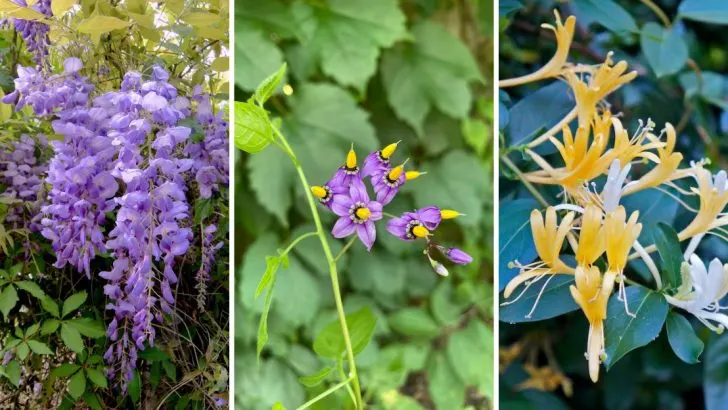Vining plants can add a ton of character to a yard—climbing fences, spilling over trellises, and bringing some much-needed texture to bare spaces. But some of them are more hassle than they’re worth. Fast growth might sound appealing, until that vine starts choking out everything in sight or becomes nearly impossible to remove.
If you’ve ever had to wrestle a stubborn vine off your siding or dig it out of your flower beds year after year, you know how quickly things can get out of hand. Luckily, there are better options that still give you the beauty and coverage without the stress. A few thoughtful swaps can save you time and help keep your garden in balance
Kudzu (Avoid)
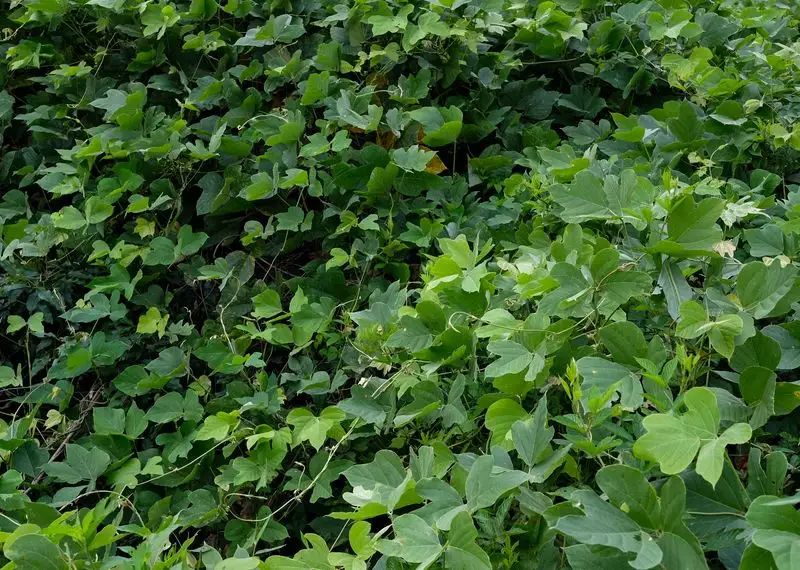
Kudzu, often called ‘the vine that ate the South,’ is notorious for its rapid growth. This invasive plant can cover everything in its path, from trees to buildings, in no time. Originally introduced for erosion control, kudzu has spiraled out of control in many areas.
Its leaves are broad and lush, creating a dense canopy that blocks sunlight from other plants, eventually suffocating them. Managing kudzu requires constant vigilance and removal efforts, making it a high-maintenance choice for any yard.
Steering clear of kudzu is wise if you wish to maintain a balanced garden ecosystem.
Virginia Creeper (Avoid)

Virginia Creeper is a fast-growing vine that can quickly take over structures, fences, and even trees. While its red autumn foliage is attractive, the plant spreads aggressively through tendrils and suckers.
Its ability to climb and cling to surfaces allows it to dominate areas, often leading to structural damage if unchecked. Homeowners may find it challenging to control once established, as it roots deeply into the ground.
Consider the potential maintenance burden before planting Virginia Creeper, as it can become more trouble than beauty in your yard.
Bittersweet Nightshade (Avoid)
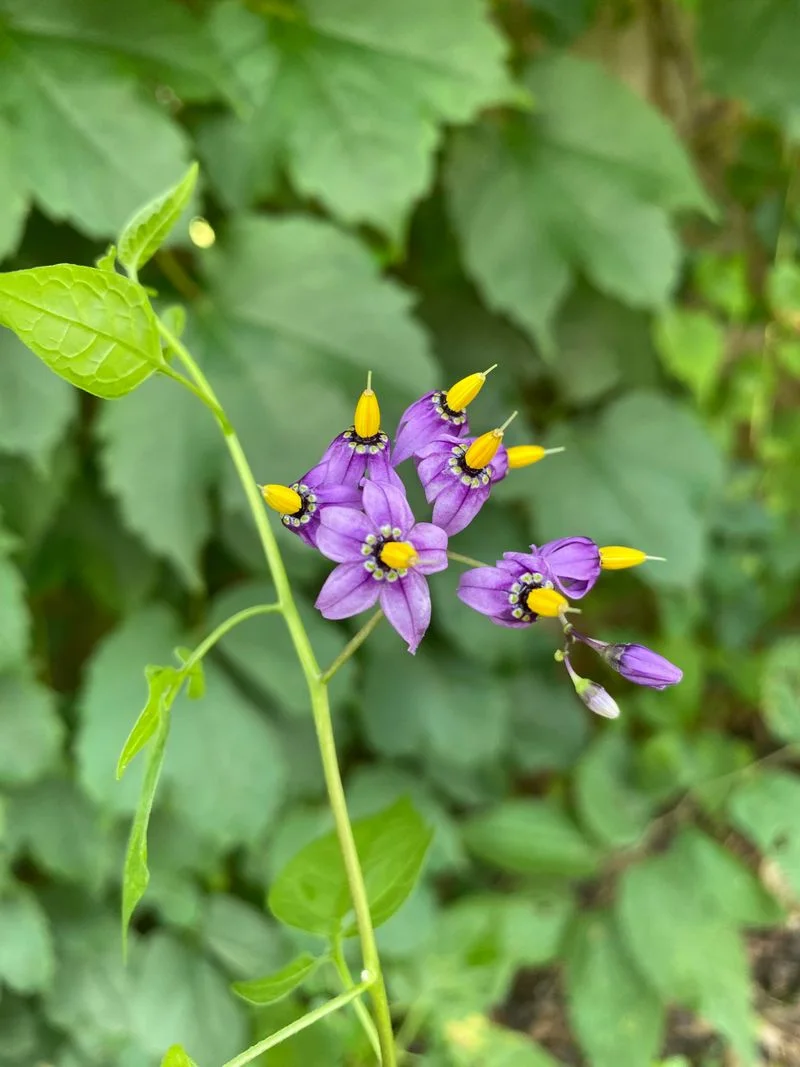
Bittersweet Nightshade is a vining plant with enticing berries and delicate purple flowers, yet it’s not as sweet as it seems. This vine is toxic to humans and pets, making it a risky choice for gardens.
In addition to its poisonous nature, it can spread aggressively, wrapping around other plants and suffocating them. Its ability to thrive in various conditions makes it challenging to control once established.
For a safer garden environment, it’s best to avoid planting Bittersweet Nightshade, especially in areas accessible to children and pets.
English Ivy (Avoid)
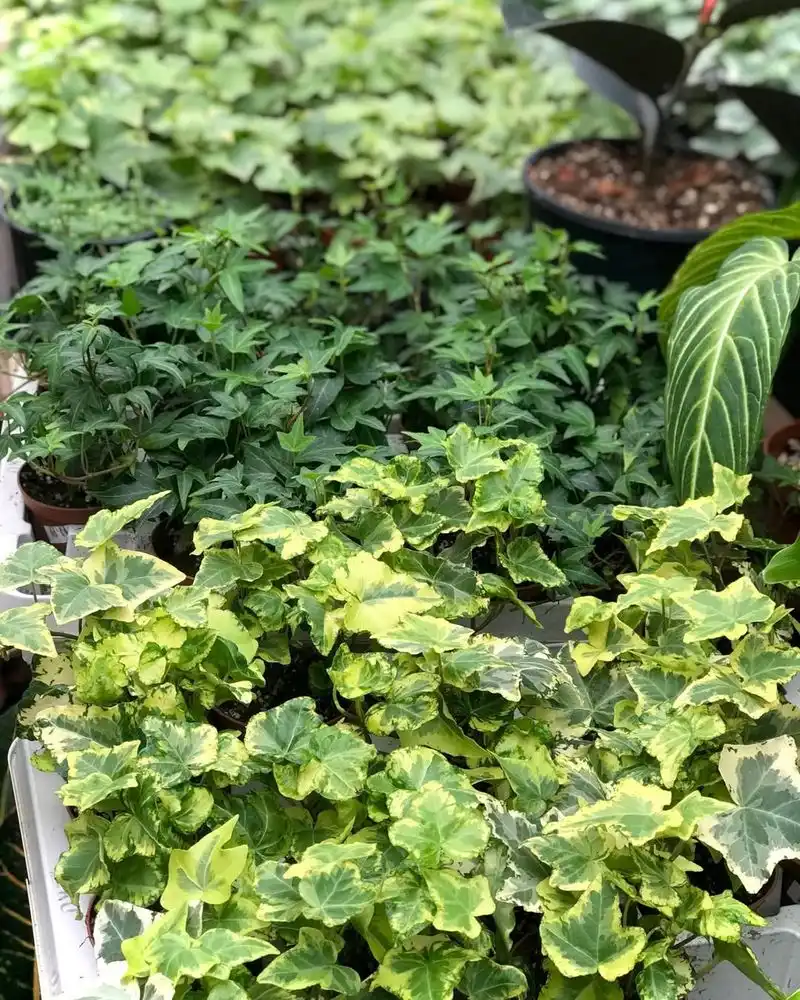
English Ivy is often admired for its classic look as it climbs walls and fences, but beneath its beauty lies a persistent invader. This vine can damage structures and outcompete native plants.
Once established, English Ivy can spread rapidly, requiring regular pruning and maintenance. Its dense growth can harbor pests and create a microclimate that encourages mold.
Those seeking a low-maintenance garden should think twice before introducing English Ivy, despite its allure. Choosing a less invasive alternative would be wise for easier garden management.
Honeysuckle (Avoid)

Honeysuckle is beloved for its sweet-smelling flowers, but in many regions, it has become an overbearing guest. This vine’s rapid growth allows it to overrun native vegetation, leading to ecological imbalances.
Its fragrant blooms attract pollinators, yet its aggressive nature can suffocate nearby plants. Removing honeysuckle can be labor-intensive, as it roots deeply and spreads widely.
Gardeners should consider local regulations and the potential environmental impact before planting honeysuckle. Opting for a native vine might offer similar beauty without the associated problems.
Wisteria (Avoid)
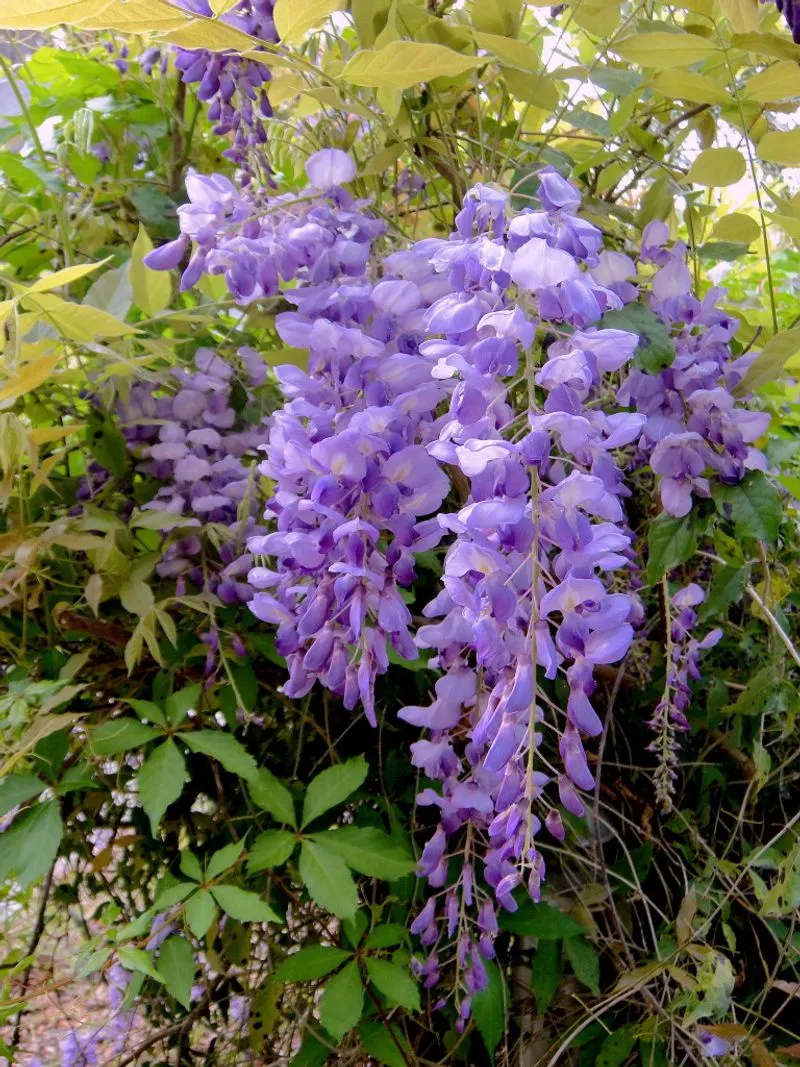
Wisteria is known for its stunning, drooping clusters of flowers that can transform gardens into enchanting spaces. However, its vigorous growth can become a double-edged sword.
The heavy vines of wisteria can damage structures like pergolas and walls if not properly supported. Controlling its growth requires regular pruning and commitment to maintenance.
For those unprepared for the challenge, wisteria might become more of a burden than a blessing. Consider the long-term care involved before welcoming this vine into your garden.
Japanese Honeysuckle (Avoid)
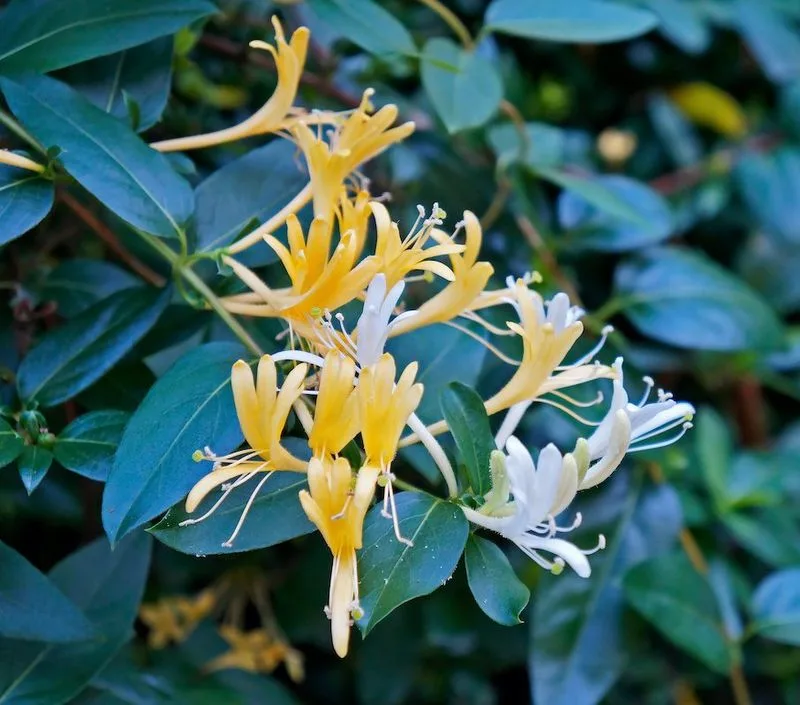
Japanese Honeysuckle is an appealing vine with its fragrant flowers and lush foliage, yet it’s a notorious invader in many parts of the world. Its rapid spread can choke native plants and disrupt local ecosystems.
This vine’s ability to thrive in various conditions makes it difficult to control once established. It can quickly cover fences, trees, and ground spaces, requiring diligent maintenance.
Gardeners should be wary of Japanese Honeysuckle’s invasive potential, opting for native alternatives that can provide beauty without the environmental risks.
Clematis Vitalba (Avoid)
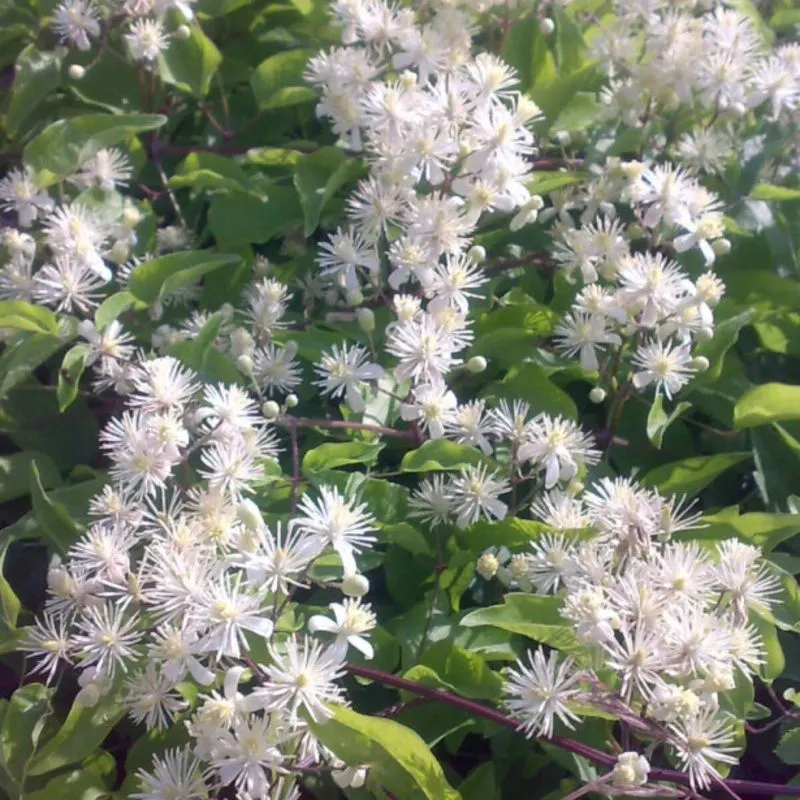
Clematis Vitalba, also known as ‘Old Man’s Beard,’ is a vigorous climber that can quickly dominate landscapes. Its dense growth smothers trees and shrubs, often leading to their decline.
The feathery seed heads of Clematis Vitalba disperse easily, allowing it to spread rapidly across large areas. Managing this vine requires persistent effort and regular removal.
For a yard that thrives harmoniously, avoiding Clematis Vitalba is advisable. Consider selecting less aggressive clematis varieties to enjoy the beauty without the battle.
Morning Glory (Avoid)
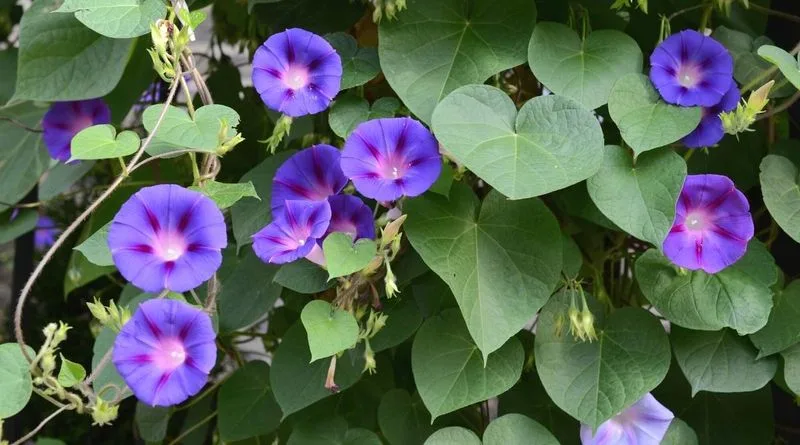
Morning Glory is prized for its vibrant, trumpet-shaped flowers that open to greet the morning sun. However, its rapid growth and self-seeding nature can turn it into a garden tyrant.
This vine can quickly cover trellises and fences, often overwhelming other plants in its path. While beautiful, its invasive tendencies demand consistent management and control.
Gardeners seeking a low-maintenance garden might find Morning Glory more hassle than it’s worth. Choose native vines that offer similar blooms without the aggressive spread.
Porcelain Berry (Avoid)
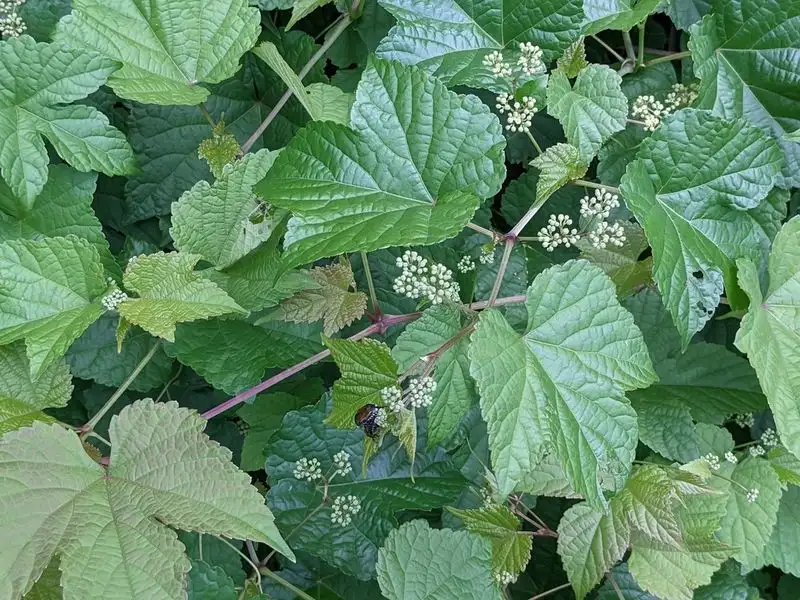
Porcelain Berry’s ornamental fruit and vibrant foliage make it an attractive choice, but this vine’s invasive nature is a cause for concern. It can overtake native plants and disrupt ecosystems.
The colorful berries spread seeds far and wide, leading to rapid colonization of new areas. Its vigorous growth requires constant attention to prevent it from overwhelming other garden inhabitants.
Opting for less invasive alternatives can help maintain a balanced and beautiful garden without the challenges posed by Porcelain Berry.
American Wisteria (Try)

American Wisteria offers the same enchanting blooms as its Asian counterparts but without the invasive tendencies. This native vine is a delightful choice for gardeners seeking beauty with balance.
Its fragrant flowers drape elegantly over arbors and trellises, adding charm without overwhelming the space. Unlike the more aggressive wisterias, American Wisteria grows more slowly, making it easier to manage.
Gardeners can enjoy the lush beauty of wisteria without the worry of rampant spread, making it an ideal alternative for a picturesque and manageable garden.
Coral Honeysuckle (Try)

Coral Honeysuckle is an excellent alternative to its invasive relatives, offering vibrant red flowers that attract hummingbirds and butterflies. This native vine grows at a manageable pace, ensuring a balanced garden.
Unlike its counterparts, Coral Honeysuckle doesn’t overwhelm its surroundings, making it a low-maintenance choice for fences, trellises, and arbors. Its beauty enhances gardens without the need for constant control.
For those seeking a harmonious and colorful garden, Coral Honeysuckle is a fantastic vine to consider, combining visual appeal with ecological respect.
Passionflower (Try)

Passionflower is a captivating vine known for its intricate and exotic flowers that bring a touch of the tropics to any garden. This native vine is both beautiful and manageable.
Its moderate growth rate allows it to climb gracefully without overstepping its bounds, making it an ideal choice for arbors and trellises. Passionflower also attracts pollinators, enhancing garden biodiversity.
For a garden that thrives on unique beauty and balance, Passionflower offers an alluring option that won’t dominate the landscape but will certainly capture attention.
Trumpet Vine (Try)
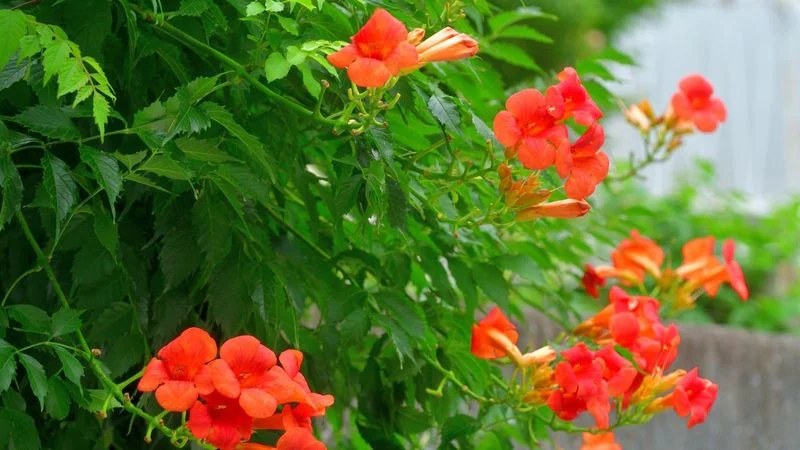
Trumpet Vine, with its bold orange blooms, offers a stunning visual display without the invasive behavior of some other vining plants. This native vine is a fantastic addition to any garden.
Its flowers attract hummingbirds, while its growth can be controlled with routine pruning. Unlike its aggressive relatives, Trumpet Vine respects its surroundings, offering beauty without burden.
For gardeners seeking vibrant color and ecological harmony, Trumpet Vine provides an ideal solution, blending ease of care with striking appearance in a well-balanced garden space.
Climbing Hydrangea (Try)

Climbing Hydrangea is a unique vine that offers lush foliage and elegant white flowers without an aggressive growth pattern. It’s perfect for gardeners who love hydrangeas and want to add a vertical element.
This vine climbs slowly and can be trained on walls and trellises, providing beauty without the battle against invasiveness. Its flowers attract pollinators, enhancing garden vitality.
For a sophisticated and manageable garden, Climbing Hydrangea offers the charm of hydrangeas without the challenges of uncontrollable spread, making it a lovely alternative.
Dutchman’s Pipe (Try)
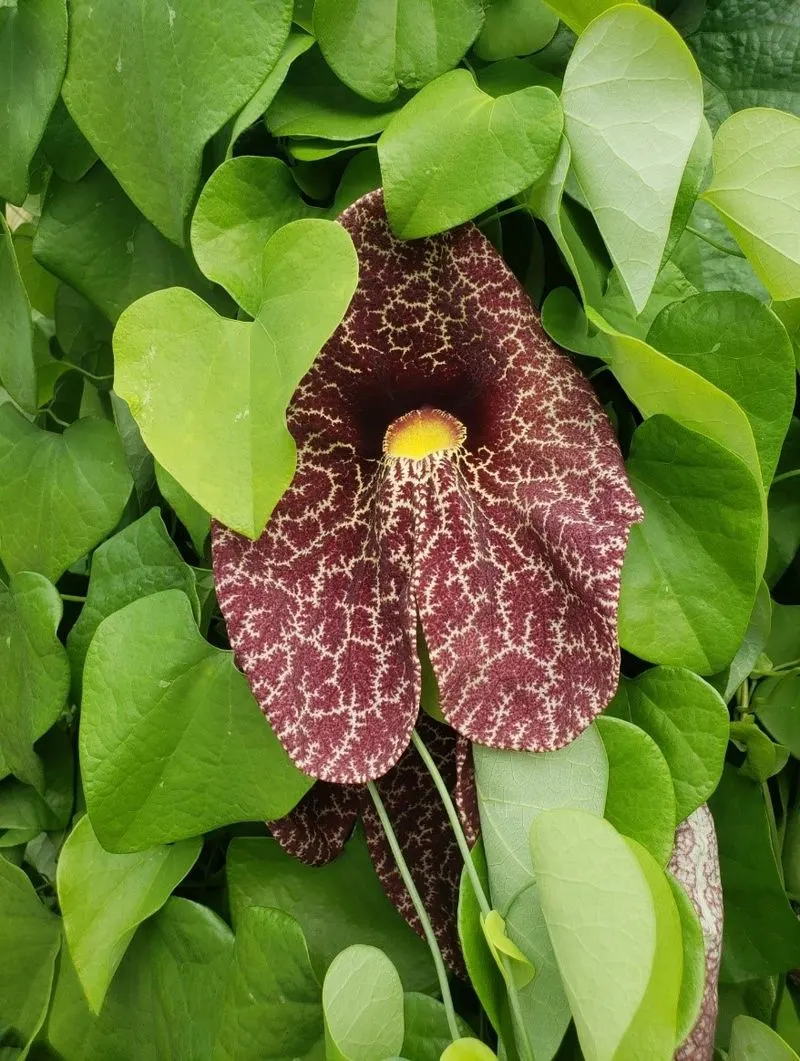
Dutchman’s Pipe is known for its unusual, pipe-shaped flowers that create a whimsical garden feature. This vine adds interest without the invasive tendencies of many other vining plants.
Its moderate growth allows it to be a delightful addition to garden structures, offering both shade and visual intrigue. Dutchman’s Pipe also supports the life cycle of native butterflies.
Gardeners seeking a quirky and eco-friendly option will find Dutchman’s Pipe a charming choice that blends beauty with ecological benefits, enhancing any garden space gracefully.
Virginia Jasmine (Try)

Virginia Jasmine offers a delicate charm with its tiny white flowers and gentle fragrance. This vine grows at a controlled pace, making it suitable for those who seek beauty without hassle.
Its non-invasive nature ensures it stays in bounds, requiring minimal maintenance while providing a lovely backdrop to fences and trellises. Virginia Jasmine attracts pollinators, enriching garden ecosystems.
For a garden that embraces serenity and grace, Virginia Jasmine is a wonderful option, providing understated elegance that complements a variety of garden styles effectively.
Crossvine (Try)
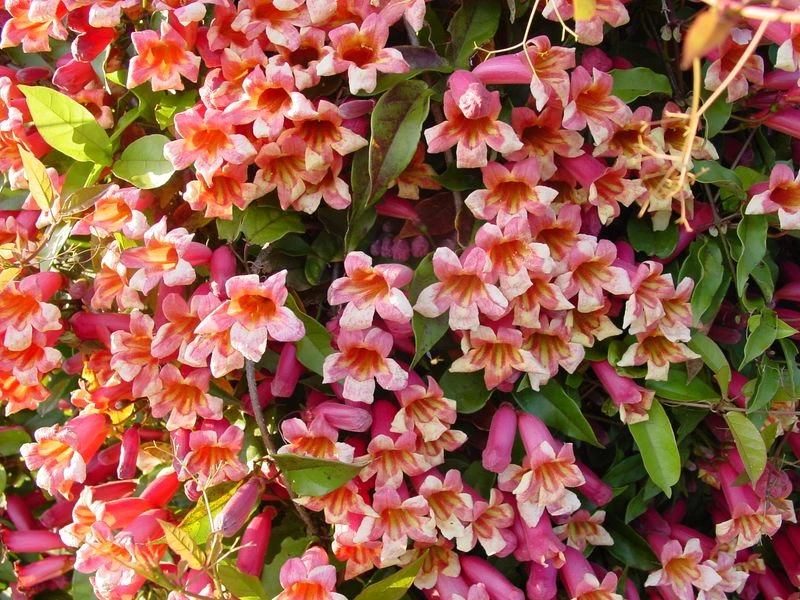
Crossvine is celebrated for its bright tubular flowers that usher in spring with vibrant colors. This native vine is both cheerful and easy to manage, offering beauty without the burden.
Its moderate growth rate ensures that it won’t overtake the garden, making it an ideal choice for fences and arbors. Crossvine attracts pollinators, adding vitality to the garden.
For gardeners who love color and low maintenance, Crossvine provides a splendid option, bringing lively hues to the garden in a harmonious, manageable way.
Chocolate Vine (Try)

Chocolate Vine offers a mix of exotic beauty and manageable growth with its purple flowers and lush green leaves. This vine climbs elegantly, making it a delightful addition to pergolas and trellises.
Its growth is moderate, allowing it to complement garden structures without overpowering them. Chocolate Vine also brings a unique fragrance, adding sensory appeal to the garden.
For those seeking a touch of the exotic, Chocolate Vine provides a lovely option, combining visual interest with ease of care, enhancing garden spaces gracefully.
Avoid: Mile-a-Minute Weed
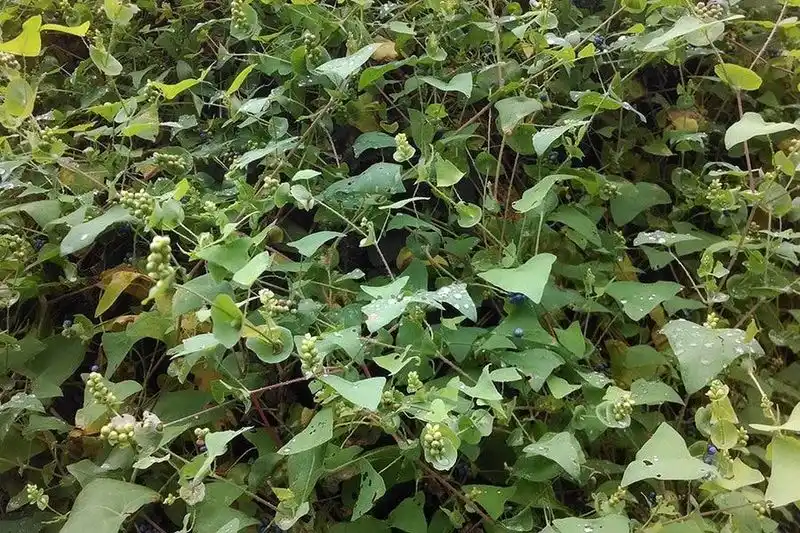
Mile-a-Minute Weed lives up to its daunting name. Known for its rapid growth, this invasive vine can choke out native plants and dominate your garden in a flash. Its delicate, triangular leaves and small, light blue flowers might seem innocent, but don’t be fooled. This plant’s barbed stems make it a formidable foe, clinging to everything in its path. In no time, it’ll smother your yard’s natural beauty. Beware its creeping tendrils that seem to stretch ever closer, as if on a mission to conquer your space. It’s a plant with an insatiable appetite for real estate in your garden.
Try: Canary Creeper

Unlike its aggressive counterparts, the Canary Creeper enchants with its cheerful blooms and gentle nature. Picture a cascade of delicate, bright yellow flowers dancing in the breeze. This charming vine climbs gracefully, its lobed leaves adding a touch of elegance to any garden. It’s a perfect choice for those seeking a vibrant, non-invasive alternative. Imagine sipping tea under a pergola draped with these sunny blossoms, their fragrance mingling with the morning air. Welcome a touch of whimsy and color into your yard with the Canary Creeper, a delightful partner in your gardening adventures.

